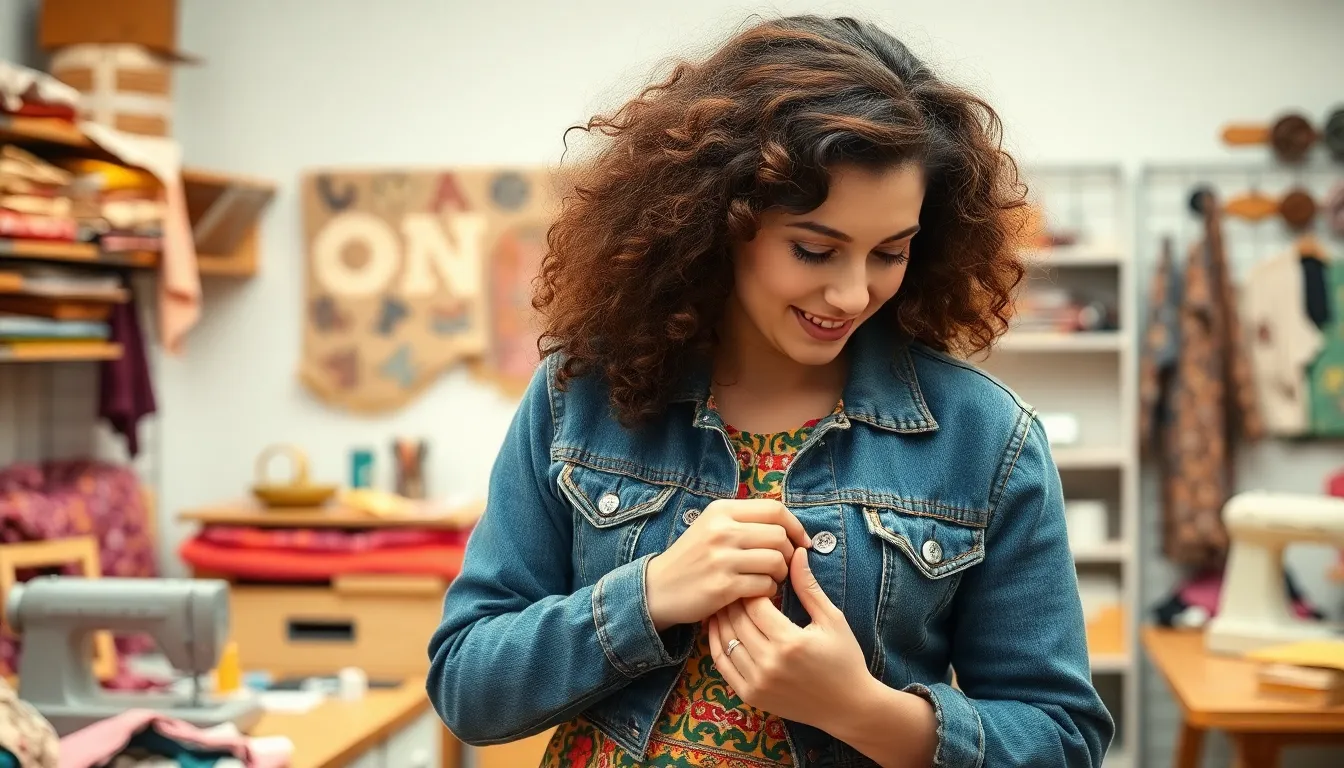Fashion macramé is making a comeback, and it’s ready to knot its way into wardrobes everywhere. Once the go-to for bohemian vibes in the ’70s, this intricate art of knotting has evolved into a trendy statement piece that’s both stylish and sustainable. Who knew that tying a few knots could lead to such fabulous fashion?
Table of Contents
ToggleWhat Is Fashion Macrame?
Fashion macramé refers to the art of knotting fibers to create intricate textile designs. This technique originated in the 13th century among Arab weavers who used knotting to finish the edges of their textiles. In the 1970s, macramé gained popularity within the bohemian fashion movement, resulting in an array of accessories for homes and wardrobes alike.
Today, fashion macramé has evolved into a trendy medium, integrating modern aesthetics with traditional craftsmanship. Styles range from simple knotted bracelets to elaborate clothing pieces, such as dresses and bags. Sustainability plays a crucial role in this revival, as consumers seek environmentally friendly options. Many artisans use natural materials, including organic cotton and hemp, to create macramé items.
The versatility of fashion macramé extends beyond clothing; it includes jewelry, home décor, and accessories. Creators experiment with colors, textures, and patterns, allowing customization for individual tastes. As a result, many outdoor festivals and artisan markets feature macramé designs prominently.
Contemporary fashion shows frequently highlight collections that incorporate macramé techniques. Innovative designers use this art to craft statement pieces that attract attention and showcase skill. The resurgence of fashion macramé not only reflects a nostalgic appreciation of the past but also embraces a commitment to sustainable fashion choices.
Ultimately, fashion macramé combines artistry with functionality, making it a standout element in modern wardrobes. This sophisticated technique brings both elegance and ruggedness, appealing to various style preferences. Through thoughtful knotting, creators transform simple materials into stunning expressions of style and individuality.
History of Macrame in Fashion

Macramé’s history in fashion illustrates its journey from ancient techniques to contemporary styles. This craft reflects a blend of cultural influences and artistic evolution.
Ancient Origins
Macramé originates from the 13th century, emerging among Arab weavers. Artisans used knotting techniques to create decorative fabrics and functional items, such as fringes on garments. The craft spread through trade routes, influencing various cultures. By the 17th century, Europe saw macramé featured in textiles and lacework, particularly in France. Royalty often adorned their attire with intricate macramé details, showcasing wealth and craftsmanship. This historical use of macramé laid the groundwork for its later popularity in the fashion world, as it signified both aesthetic appeal and cultural significance.
Modern Revival
A resurgence of interest in the 1970s propelled macramé into mainstream fashion. This decade embraced bohemian styles, with macramé appearing in accessories like bags and jewelry. Today’s designers play with macramé’s versatility, integrating it into garments and home décor. Artisans prioritize sustainability, often using eco-friendly materials like organic cotton and hemp. This revival emphasizes individuality, as made-to-order pieces reflect unique styles and preferences. Contemporary fashion shows celebrate macramé, reinforcing its relevance and striking appeal in today’s fashion landscape. The blend of tradition and modernity continues to captivate fashion enthusiasts, demonstrating macramé’s enduring charm.
Key Techniques in Fashion Macrame
Fashion macramé incorporates various key techniques. These techniques elevate its aesthetic and functional appeal.
Knotting Styles
Knotting styles play a crucial role in fashion macramé. Square knots create strong connections, often forming the foundation of designs. Lark’s head knots attach cords securely to a base, allowing for an array of creative formations. Half-hitch knots add texture and dimension, enhancing the overall look. Combining these knots results in intricate patterns, showcasing artisans’ skills. Double half-hitch knots introduce stability while generating unique shapes. Mastery of these styles enables artisans to create both structured and organic forms in their pieces.
Materials Used
Materials used in fashion macramé significantly impact the final product. Natural fibers like organic cotton possess softness and durability, suitable for wearables. Hemp stands out for its strength and eco-friendliness, making it a popular choice among sustainable creators. Synthetic cords offer vibrant colors and weather resistance, perfect for outdoor accessories. Some artisans combine materials to blend texture and visual interest in their creations. Additionally, recycled fibers promote sustainability, appealing to environmentally conscious consumers. Selection of materials shapes not only the aesthetic but also the functionality of macramé designs.
Styling Tips for Fashion Macrame
Fashion macramé enhances various outfits and accessories, creating unique expressions of personal style. Creative layering adds depth, combining macramé pieces with breezy linen tops or fitted dresses. Statement necklaces made from intricate knots can transform a simple outfit into a focal point. Additionally, macramé bags offer both aesthetic appeal and functionality, ideal for casual outings or chic events. Mixing different textures, such as pairing a macramé belt with denim or cotton, can elevate the look effortlessly.
Seasonal trends also influence the styling of fashion macramé. In warmer months, lighter colors and airy designs thrive, often showcased in beachwear or sundresses. As temperatures drop, rich hues and heavier patterns emerge, complementing cozy sweaters or jackets. Accessories, like macramé earrings or headbands, can easily transition between seasons, providing versatility. Embracing these seasonal shifts allows for continuous exploration and adaptation of macramé in everyday fashion.
Fashion macramé stands as a testament to the enduring appeal of craftsmanship and creativity. Its unique blend of traditional techniques and modern aesthetics allows individuals to express their personal style in diverse ways. As sustainability becomes increasingly important in fashion, macramé offers a responsible choice that doesn’t compromise on style.
The versatility of macramé pieces—from jewelry to home décor—ensures that there’s something for everyone. By incorporating these intricate designs into their wardrobes, fashion enthusiasts can embrace a trend that honors history while looking toward the future. As macramé continues to evolve, it promises to remain a captivating element in the ever-changing landscape of fashion.



